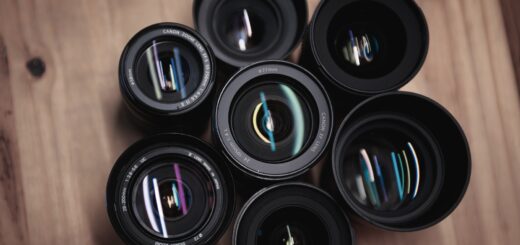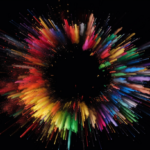Which Color Space to Set In-Camera?

Most cameras allow you to specify a color space to save your images in, and typically the two color spaces available for selection are sRGB and Adobe RGB.
We’ll look into their differences, and talk about what effects they have as well as what kind of applications they would serve.
What is a color space?
Before going into details of the color space settings in cameras, let’s first have a quick and simple discussion on color spaces.
In any given image, each pixel is represented by a RGB (Red, Green, Blue) value, and these values are mapped to their corresponding colors.
The exact color that these values are mapped to depends on the color space selected. Take a look at this image below:
Based on this chart, you will notice that the Adobe RGB space (denoted by the black triangle) covers a larger area than that of the sRGB space (denoted by the white trangle), especially in the green-cyan-blue region.
So a pure green color of RGB values (0,255,0) will look much richer on the Adobe RGB space than on the sRGB space.
Bigger space is better right?
On paper a bigger color space would be able to encompass more colors, resulting in more vibrant and richer images as more colors can be reproduced.
However, even though a wide gamut (i.e. any color space that is larger than the sRGB gamut) is favorable, issues like costs have impeded the adoption of wide gamut displays, and this is further implicated by the fact that budget displays have a gamut even smaller than that of sRGB.
Another major issue is how our computers (and smartphones) deal with color spaces – if a program or application is not color-managed or color-aware, by default it reverts to sRGB color space.
This brings forth a huge implication for images saved in Adobe RGB (or any other non-sRGB color spaces in general) – Adobe RGB images look dull on sRGB displays without color management or using applications without color-awareness.
But won’t choosing sRGB cause me to lose color information in my photos?
This question is slightly trickier to answer, so we need to first break down the photo saving process a little.
When you capture an image, data from the sensor is first recorded as RAW data, which contains all the color and luminosity information with only very minimal processing done by the camera to maintain image integrity.
This RAW data is then piped through the processor to generate a lossy-compressed JPG image, where redundant information is discarded and only essential color information of the image is saved.
This JPG image can then be used in two areas – under your camera settings, if you choose to save your captured images as RAW files, the JPG generated will act as a preview for the RAW file; if you choose to save them as only JPG files, the processed JPG file will be saved and the RAW data cleared from the buffer.
So what is interesting here is the color space of the actual RAW data itself – while the exact gamut of the color space differs from sensors and manufacturers, the sensors capture color and luminosity information of a gamut even greater than Adobe RGB! This data is then transformed into the appropriate color spaces when generating the JPG files.
In short, if you shoot RAW files, it does not matter which color space you chose to shoot in-camera, as the RAW files are saved with its original color space and the final color space is only determined after you post process the RAW file on your PC and export it as a JPG.
However, on the contrary, if you shoot only JPG files, then yes, saving in sRGB color space in-camera will cause you to lose color information as the gamut of the image has to be compressed to fit the sRGB color space gamut.
Contrary to popular belief that RAW files are literally RAW uncooked data from the image sensor itself, most RAW files do contain some form of processing by the image processor – usually things like minimal high ISO noise reduction algorithms or black frame noise reduction algorithms, or some simple color transformations.
However these extra processing are kept to a minimal in order maintain as high an image fidelity as possible with the actual untouched RAW data direct from the sensor in order to provide maximum editing latitude when post processing.
Implications of selecting Adobe RGB in-camera
Now that we know the color space settings only affected the generated JPGs in-camera, let’s see what are some of the implications changing to Adobe RGB do.
- The most direct implication would be if you save direct as JPG only – saving in Adobe RGB will maintain more color information in your JPG, but you need to make sure that your image will be viewed in a properly color-managed environment with the respective programs and applications being color-aware on a wide-gamut display.
- While the selected color space does not have an effect on the RAW file’s data itself, the generated JPG preview will be in Adobe RGB, and as such the histogram will look different. This is useful to check for color clippings if you do HDR or stack color intensive images.
- One quirky convention with regards to file naming happens when you choose Adobe RGB – by default sRGB goes with a
_ . format (e.g DSC_0001.jpg or DSC_0001.NEF), but when Adobe RGB is selected it goes by a _ . format (e.g. _DSC0001.jpg or _DSC0001.NEF)
In summary
If you are a RAW shooter, it does not matter which color space you set your camera to, but for easier to manage file names it’s usually recommended to stick with sRGB just so that the underscore does not appear at the front.
If you are a JPG shooter, you would have to decide if your images need wide generic acceptance (sRGB) or has to fill a particular use case where extra color information is critical (Adobe RGB).









